Customer Services
Copyright © 2025 Desertcart Holdings Limited
Desert Online General Trading LLC
Dubai, United Arab Emirates




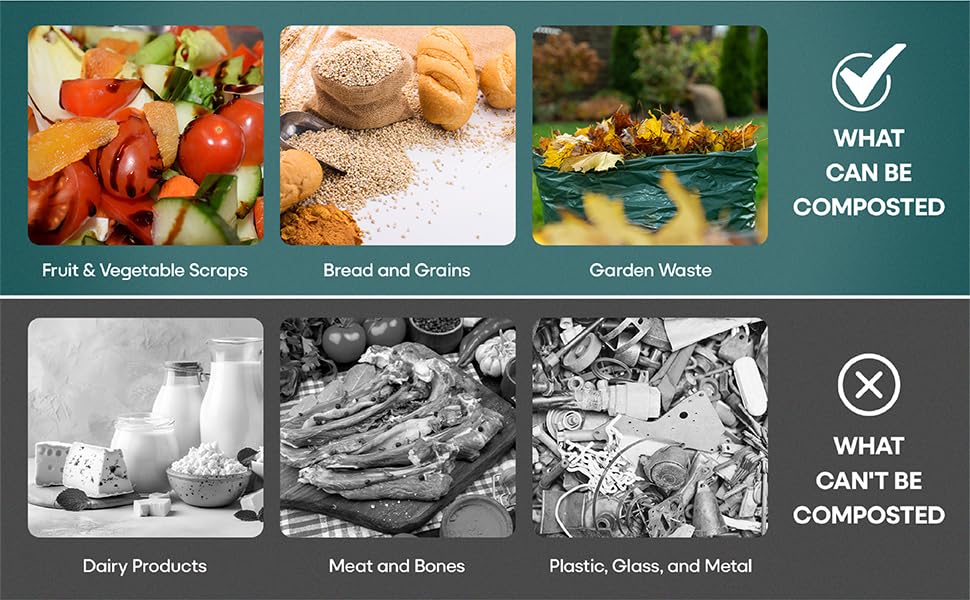

♻️ Compost Like a Pro – Join the Sustainable Revolution!
The Original Vermihut ® Plus 5 is a state-of-the-art worm composting system designed for both indoor and outdoor use. With five standard trays and the option to add more, this composter features innovative airflow technology and built-in odor control for efficient composting. It includes essential accessories and offers free technical support, making it the ideal choice for eco-conscious individuals looking to recycle food waste sustainably.
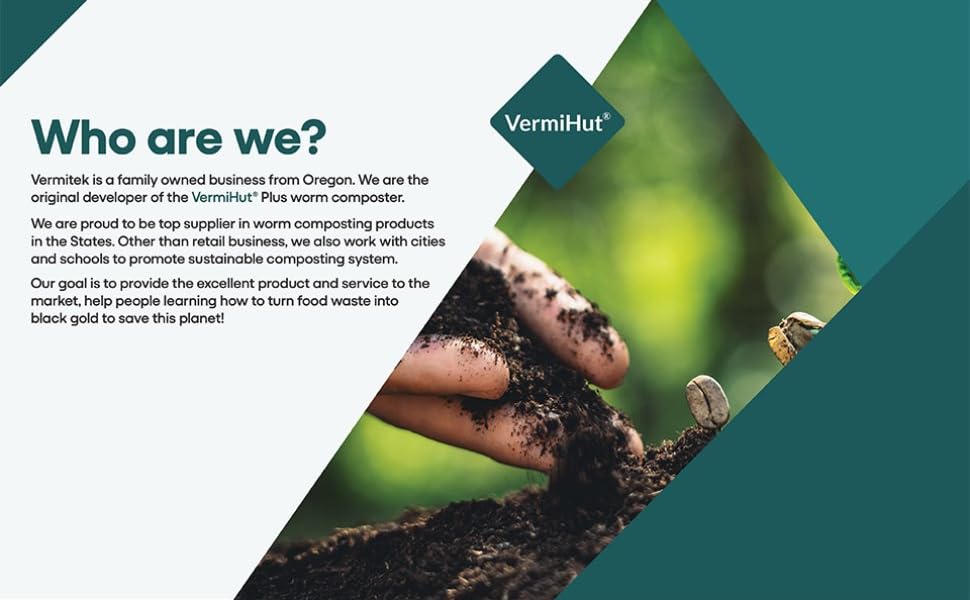
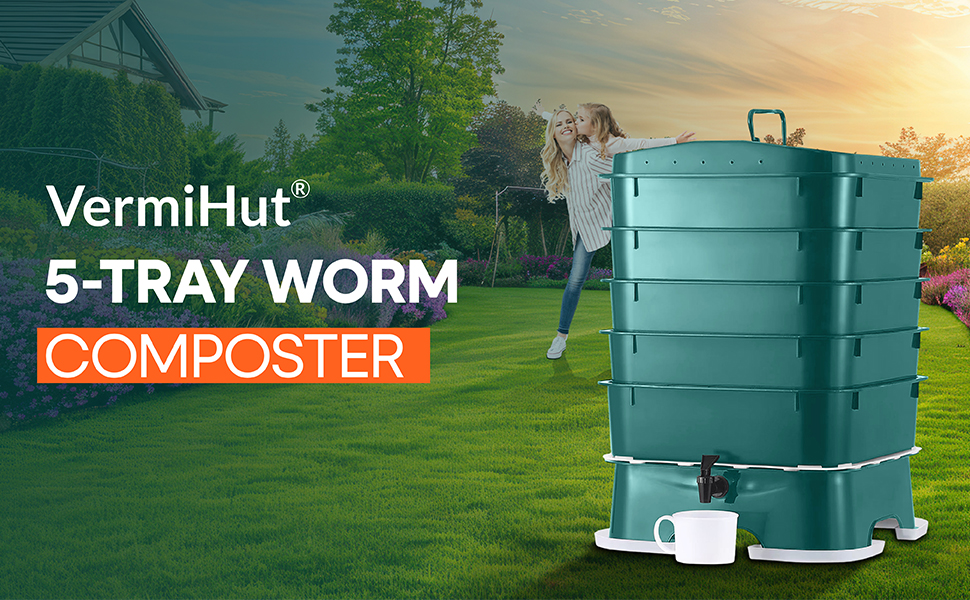
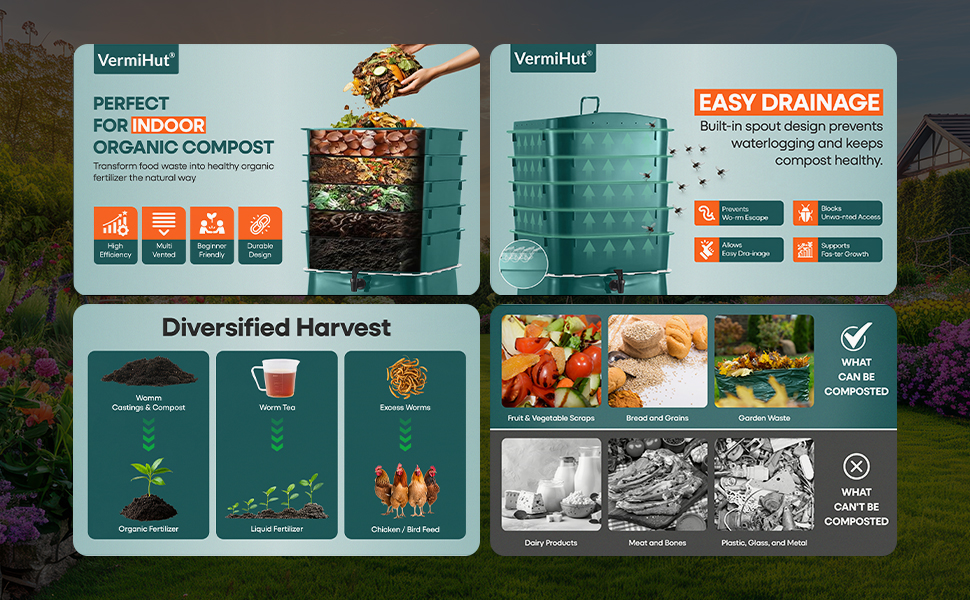
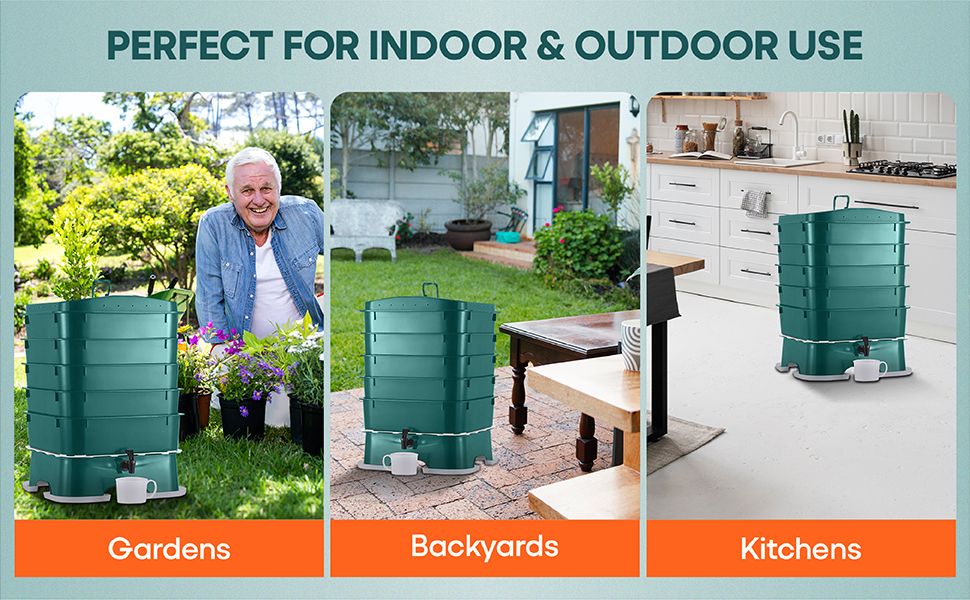
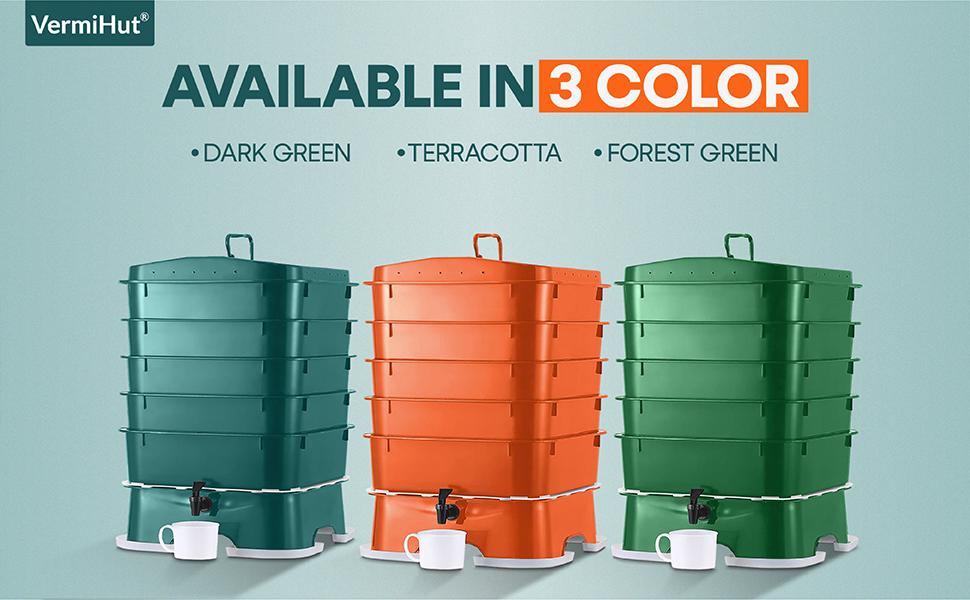
| Item Dimensions L x W x H | 17"L x 17"W x 33"H |
| Item Weight | 12 Pounds |
| Capacity | 40 Liters |
| Shape | Square |
| Color | Dark Green |
| Material | HDPE Plastic |
G**L
Easy set up and maintenance.
Watch YouTube videos to become familiar with set up and operation BEFORE you order your worms and you will have a great experience. This is likely the most efficient worm composter out there, especially if you follow the rotation/migration system for harvesting your castings.I ordered worms from Uncle Jim's Worm Farm. They came in 2 days and I was ready to put them in their new home. In 60 days I should be harvesting the 1st tray of castings to feed my greenhouse garden.
C**.
Easily replicable apparently
Great item but might as well buy the equivalent Vevor unit. It is the EXACT same components down to the detail of the worm on the lid. Both made in China so no surprise. Only (very) subtle difference in accessories. Vermihut has magnet and block of coir while vevor has mat of coir and no magnet.
H**E
A few escape each night, but good price and came with unlisted useful extras.
The picture gives the impression that each tray sits equidistant from the bottom of the one beneath it, as if they lock in place. This is not the case.Each tray sits pressed directly against the compost in the tray below it. No trays lock in place. The tower could easily be knocked over and fall apart by a person or big animal. I keep a broken cinder block piece on the lid to discourage this possibilityWorms do escape at night (I find them dead in the ant traps around the feet, and sometimes I see them noodling out in the day before trying to squeeze back in). They aren't escaping en masse but a few every day is going to add up.This is also problematic because I had planned to take them indoors when it gets super hot in summer. If I do that, I'll have to worry about worms exploring my house. 😔All that said, the price is pretty good compared to some other models, it came with a couple unlisted extras including a little hand rake and a nice coir mat for the bottom tray (the instructions suggested using cardboard but the coir mat is perfect), and the overall design makes sense (though perhaps not optimal for my summer needs).
B**E
Good Design
I'll start with saying that all of the vertical stacking worm farms operate pretty much identically. There's no big differentiator between them in terms of producing worm castings. With that said, I bought the Worm Factory 12 years ago and it's produced a large amount of worm castings over the years, but with that amount of time, a couple of things cropped up; 1) the trays are starting to crack at the corners, and 2) I don't feel the legs are designed well to support the weight of five full trays; the legs have been splaying out over time.Given that they all operate on the same principle, it came down to design and, to a lesser extent, price. I like the base on the VermiHut as there's no way the support legs will splay out over time. I also like the rounded corners of the trays as I believe this design relieves some of the stress that my Worm Factory experienced with cracking at the tray corners. And I'm happy that everything's allegedly made from 100% recycled materials.I guess the second criteria for selecting a product is what's included. Mine came with a brick of coconut coir and a woven mat made of some kind of organic fiber. I don't need either one as I just moved the contents of my existing trays to the new VermiHut. I also didn't use the included sheets of nylon mesh as I'm using mine outdoors, nor did I need the trays for preventing ants from invading (good design though). The one thing the Worm Factory came with that the VermiHut didn't was a small bag of vermiculite that worms apparently like for digestion (it deposits in the worms' guts), but I haven't used it in years and it doesn't seem to impact the quantity of worm castings produced.As another reviewer mentioned, you should be producing little to no leachate. If you are, you're ecosystem has too much moisture and the whole bin is likely to smell pretty bad. When I moved the contents of my old trays to the VermiHut, there was literally zero smell at all, no liquid in the base, and thousands of happy worms. We've tuned what we put in the bin over the years and are now down to just espresso machine coffee pucks (very low moisture), banana peels and the occasional overripe banana. The worms love it, but I think it comes down to the moisture level that makes them and the ecosystem thrive. The VermiHut is clearly designed for very little leachate production based on the volume of the base which is fine with me.All in all, I'm a satisfied customer and expect the VermiHut to last at least as many years as the Worm Factory. I did contact VermiHut to ask about a couple of things not mentioned in the owner's manual and they promptly clarified everything.I'll close with a lesson learned a long time ago.... you should never give your worms hot chili peppers. I literally murdered almost every worm in all of the bins and felt horrible about it! Poor little guys.
C**G
Takes a fair amount of work but there's something about a writhing mass of happy worms...
My first worm-bin traveled through several moves but died a tragic death in the late 1990s when mice chewed their way in and feasted on my hard-working worms, so I'd been leery of keeping one in the cellar ever since. We started this one at room-temperature in a seldom-used space with mixed worm species from a local professional supplier (worm castings are big with the marijuana trade) and they'd multiplied happily, but they needed to move to our cellar and I was fearful that the mice or the cold would put an end to them. There's probably a little heat from normal composting processes, however, and it turns out that mice can't crawl upside down so I moved a stack of four trays onto a 40" square of 3/4" plywood on top of sturdy former router table table (and out of jumping distance from nearby climbables) and everyone is doing great. There must be 3 or 4 pounds of worms now and even when it's under 50°F they go through a couple pounds a week of well-vetted scrapings, rinds, too-spotty veggies and fruit.The worms can only process so much shredded corrugated, b&w newspaper, and other "browns", however, and this design produces more liquid than models with more aeration, so another advantage of the 40"x40" plywood square is that I can position a container under the tap and tip the square with the bins on top of it to empty the bottom reservoir weekly (which is a nice bonus for the houseplant forest, too!). Moisture is also an issue when the bottom bin of castings is ready to "harvest", so you'll need to do some air- and/or sun-drying, but that's all part of the worm-husbandry fun, right?The bins are sturdy and fit together well. The coconut-fibre top pad won't last long but the worms don't seem to need it. They'll thrive as long as the human factor is consistent and considerate! No onions, no potatoes, and nothing too watery... and the worms are happy and remarkably odorless.
Trustpilot
5 days ago
1 month ago